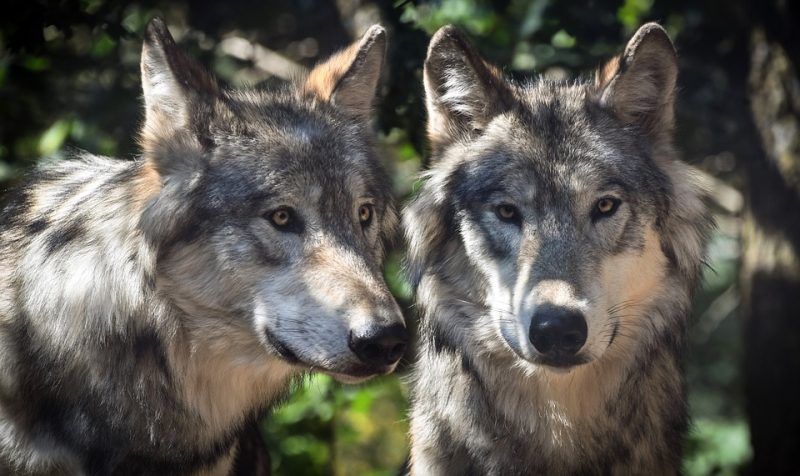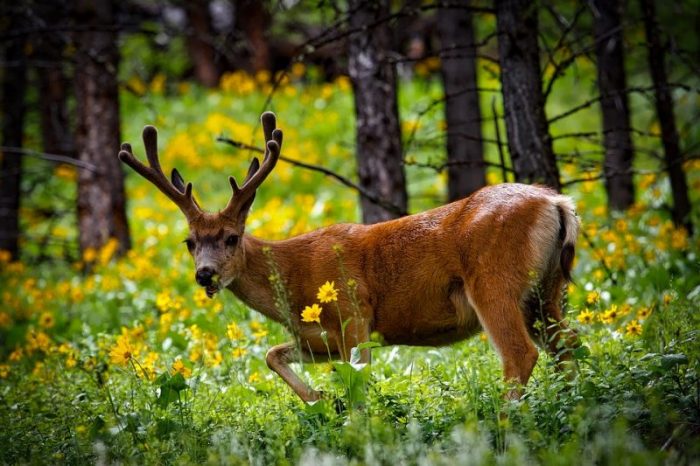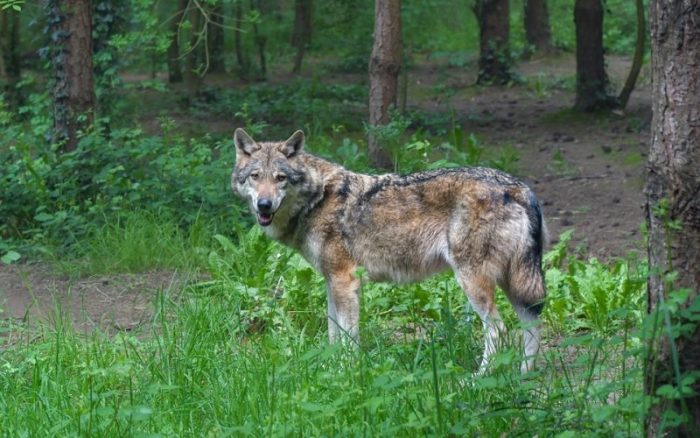
For the past four decades, Yellowstone National Park has been running an experiment. The experiment was to reintroduce wolves, long wiped out within the park, to the park and see how the ecosystem changed.
Just recently a new study was published that examined data collected over 40 years of research done in the park, and it determined that the reintroduction of wolves to the park brought much more biodiversity back to Yellowstone, making the reintroduction project successful at restoring some natural balance to Yellowstone’s ecosystem.
Reintroducing Wolves
When Yellowstone was first given National Park status in 1872, there weren’t any existing laws that protected the many species of animals that lived within the park. The late 1800s to early 1900s saw a mass hunting program that killed thousands of wolves within the park’s boundaries, and what followed was a profound change in Yellowstone’s ecosystem. The removal of wolves, the theory goes, lead to an explosion in the local elk population and more grazing animals lead to the park’s grasslands being overgrazed, resulting in the degradation of many plant species. In turn, the reduction of plant diversity lead to greater erosion of the landscape and various cascading effects that harmed other species of animals.
In response to the ecosystem damage that the removal of wolves had created, scientists and conservationists began to call for the reintroduction of the wolves to the park. ScienceAlert reports that in 1995 a reintroduction attempt began in Yellowstone, aiming to bring wolves back to the park by establishing a small population that could reproduce. Fourteen wolves originating the Alberta, Canada region were released in the park, and two years later 17 more wolves were released. Over the course of five years, the 31 introduced wolves were able to breed and divide into numerous packs and populations.
A Repairing Ecosystem
Mark Boyce, ecologist from the University of Alberta, is the author of the study that examined how the wolf reintroduction project impacted Yellowstone’s ecology. According to Boyce as quoted by University of Alberta, the reintroduction of wolves had benefited the park in ways that were not anticipated, especially regarding “the complexity of biological interactions in the park”.
As an example, Boyce says that the wolves were responsible for some of the woody plants like cottonwood and willows coming back to the park’s landscape. The effect of this was, presumably, reduced numbers of elk resulting from the hunting of elk by wolves. ScienceAlert explains that the reduction of the elk population had created an instance of a phenomenon known as “trophic cascade”, where the reduction of one type of predation kicked off changes that reverberated through the entire food web, for example letting certain types of grass grow again. Bison populations may also have recovered thanks to less competition over resources from massive elk groups. Boyce says these interconnected changes rank among the most notable events in conservation biology to occur within the century.
Boyce explains in an interview with Newsweek:
One of the unique results was how the trophic cascade created huge spatial variation in the recovery of vegetation, thereby increasing the spatial heterogeneity of the park. This is profoundly important for biodiversity. This result was entirely unexpected.
Boyce says that the success of the wolf reintroduction program demonstrates how a more Laissez-faire, hands-off, approach to ecosystem management can lead to greater biodiversity in an ecosystem. The study states that the National Park Service has adopted models of ecology management that minimize interference wherever possible and allow natural events to alter the ecosystem, and that is was this hands-off policy which allowed natural dynamics to emerge.
Boyce does note, as reported by ScienceDaily, that the Yellowstone model of wolf reintroduction and minimalist intervention shouldn’t be expected to work in human-dominated ecosystems. Regions outside of national parks, where humans have massive effects on ecosystems, wouldn’t see the same benefits and the introduction of large carnivores to these regions would have very different effects due to the way that hunting, livestock, and agricultural operations outweigh the impact of large carnivores on an ecosystem.
A Remarkable Recovery?
However, the recent attention building over the impact of wolves in Yellowstone’s ecosystem has kicked off a debate about to what extent the reintroduction of predators can salvage a damaged ecosystem. Critics of the idea that wolves have brought about a great restoration to Yellowstone argue that the effects of wolves on elk populations have been overstated, or that the restoration of the park still has quite far to go.
A professor of ecology at Colorado State University, Tom Hobbs, said to USA today that while the reintroduction of wolves is a positive thing, we shouldn’t expect this to be a quick fix for a damaged ecosystem. Hobbs argues that conditions have changed far too much in the intervening decades since the wolves went extinct in Yellowstone for the reintroduction of wolves to cause a complete recovery of the landscape.
Trees haven’t returned to every corner of the park. For instance, willows haven’t returned in many areas, and likewise, beaver populations are still struggling in the park since. Willows require beavers to keep streams from eroding their soil and beavers need willows to create dams. This co-dependent relationship means it is very difficult for both species to come back in meaningful numbers. Hobbs said that maintaining intact ecosystems is likely to be easier than trying to rebuild them after they’ve been damaged.
It is also difficult to say exactly how much of Yellowstone’s recovery is due to the rebounding of wolf populations. Populations of other predators in the park, like bears and mountain lions, have also rebounded over the past several decades. Dan MacNulty, associate professor of ecology at Utah State University explained to USA Today that it is difficult to tease apart the multiple factors that could have contributed to Yellowstone’s recover. After all, adaptation means organisms can evolve to compensate for their new environment and ecosystems can be surprisingly robust. Funding is another issue, as lack of funds for research means less data over the long-term. McNulty says this is why there is so much scientific disagreement over the topic.
Arthur Middleton, a wildlife ecologist from UC Berkeley, warned in a 2014 New York Times op-ed against oversimplifying the recovery of Yellowstone and said that by chalking Yellowstone’s recovery up to only the effect of wolves distracts from larger problems and “mislead ourselves (us) about the true challenges of managing ecosystems”.
While it is true that we should be careful of oversimplifying the story of Yellowstone’s ecosystem, and while the exact extent to which wolves played a part in enabling Yellowstone to recover is up for debate, most ecologists seem to agree that the park has recovered to some extent and that removing large predators from the park now would be a costly mistake. Boyce’s study is currently the most complete examination of the effect wolves have had on the park, and from it it seems clear that the wolves have at least catalyzed a positive transformation within the park’s boundaries, even if there is still a long way to go.
“We would have never seen these responses if the park hadn’t followed an ecological-process management paradigm, allowing natural ecological processes to take place with minimal human intervention, ” said Boyce to ScienceDaily.











